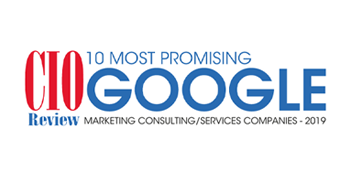Strategic Marketing Strategies: How to Outsmart Your Competitors in 2024

Introduction
A marketing strategy is a comprehensive plan crafted to promote and sell products or services effectively. It encompasses various marketing techniques, from identifying target audiences to setting measurable goals. For any business, having a solid marketing strategy is crucial. It not only enhances customer nurturing and business improvement but also significantly increases ROI.
In today’s competitive market landscape, staying ahead of competitors is imperative. Companies that continually innovate and adapt their strategic marketing strategies outperform those that do not. This is especially true for small businesses, where the right marketing strategies for small businesses can make a significant difference in their market presence and growth.
This article presents a 7-step approach designed to help you outsmart your competitors and create a comprehensive and effective marketing strategy in 2024:
- Conducting In-Depth Market Research
- Defining Your Unique Selling Proposition (USP)
- Developing a Targeted Marketing Mix Strategy
- Crafting Integrated Marketing Communication (IMC) Plans
- Implementing and Evaluating Your Strategy
- Embracing Innovative Technologies in Your Marketing Efforts, such as Shopify Marketing Strategy, which has proven to be highly effective in boosting sales for businesses.
- Nurturing Customer Relationships Through Effective CRM Strategies, leveraging the power of digital transformation, and utilizing platforms like social media to connect with customers on a deeper level.
By following this detailed framework, you will be well-equipped to devise marketing strategy techniques that are both robust and adaptable to the ever-changing market dynamics.
1. Conducting In-Depth Market Research
The first step in crafting a successful marketing strategy is conducting comprehensive market research. This involves gathering valuable insights about the industry, understanding your target audience, and analyzing key competitors.
Methods for Conducting Thorough Market Research
To achieve this, you can employ a variety of research techniques:
- Primary Research: Engage directly with your audience through surveys, interviews, and focus groups. This method allows you to collect specific data tailored to your business needs.
- Secondary Research: Utilize existing resources such as industry reports, market studies, and competitive analysis from reputable sources like Web Conductors. These provide a broader perspective on market trends and consumer behavior.
Understanding Consumer Behavior and Market Trends
Understanding consumer behavior is crucial for tailoring your marketing efforts effectively. Identifying market trends helps you stay relevant and meet evolving customer needs. Here’s how you can approach it:
- Behavioral Analysis: Study purchasing patterns, preferences, and feedback from your customers.
- Trend Identification: Keep an eye on emerging trends within your industry by monitoring news articles, attending industry conferences, and subscribing to relevant publications.
Performing a Comprehensive Competitor Analysis
A thorough competitor analysis gives you a competitive edge by highlighting strengths and weaknesses in comparison to your rivals. Here are some steps to guide you:
- Identify Competitors: List direct competitors who offer similar products or services.
- Analyze Their Strategies: Examine their marketing campaigns, pricing models, product offerings, and customer reviews.
- SWOT Analysis: Conduct a SWOT (Strengths, Weaknesses, Opportunities, Threats) analysis to understand where you stand in the market relative to your competitors.
Incorporating these research methods ensures that your marketing strategy is built on a solid foundation of data-driven insights. This approach not only informs your marketing efforts but also positions you to outsmart your competitors effectively. To see an example of how this research can be put into practice, check out Julian and Brandon’s Ad in the fitness industry where they have successfully utilized these strategies to create a compelling campaign.
2. Defining Your Unique Selling Proposition (USP)
Unique Selling Proposition (USP) is a critical element in marketing strategy that sets your brand apart from competitors. It’s the distinct benefit or characteristic that makes your product or service stand out in the market. A well-defined USP can drive customer attraction and retention by clearly communicating why your offering is superior or unique.
Why a USP is Essential for Differentiation
- Market Saturation: In a crowded marketplace, numerous brands vie for the same audience’s attention. A compelling USP ensures your brand doesn’t get lost in the noise.
- Brand Positioning: It establishes a clear position for your brand, making it easier for customers to understand what you offer and why it’s valuable to them.
- Customer Loyalty: A strong USP builds trust and loyalty, as customers are more likely to stick with a brand that clearly communicates its unique value.
How to Identify and Articulate Your Brand’s USP
- Understand Your Audience:
- Conduct surveys and focus groups to gather insights into what your target market values most.
- Analyze customer feedback to identify recurring themes and preferences.
- Evaluate Competitors:
- Perform a competitor analysis to understand their USPs and identify gaps you can fill.
- Look at video marketing strategies that competitors might be using, including innovative approaches found in our Video Marketing Archives.
- Highlight Unique Benefits:
- Focus on what makes your product or service distinct, whether it’s quality, price, innovation, or exceptional customer service.
- Consider visiting The Good Part 2 for inspiration on storytelling techniques that highlight your unique benefits.
- Communicate Clearly:
- Use concise and impactful messaging across all marketing channels to ensure consistency.
- Leverage visual aids such as videos or infographics—similar to those seen in this arm workout video—to effectively convey your USP.
A well-crafted USP not only differentiates your brand but also aligns with consumer needs, driving both short-term engagement and long-term loyalty.
3. Developing a Targeted Marketing Mix Strategy
The marketing mix is a foundational concept in marketing that comprises four key elements: product, price, place, and promotion. Known as the 4 Ps of marketing, these elements help businesses craft a strategy that effectively meets customer needs while achieving organizational goals.
Product
Your product is the core of your marketing strategy. It includes everything from design to features, quality, and branding. To develop an effective product strategy:
- Identify what makes your product unique.
- Focus on solving specific problems for your target audience.
- Continuously gather customer feedback for improvements.
Price
Setting the right price requires balancing profitability with customer value perception. Strategies for pricing include:
- Conducting market research to understand competitor pricing.
- Implementing dynamic pricing based on demand and market conditions.
- Offering discounts or bundles to attract different customer segments.
Place
Choosing the right distribution channels ensures your product reaches the target audience efficiently. Considerations include:
- Analyzing where your customers prefer to shop—online versus physical stores.
- Utilizing e-commerce platforms to expand reach.
- Partnering with retailers or distributors to enhance availability.
Promotion
Promotion involves all activities aimed at increasing awareness and sales. Effective promotion strategies might involve:
- Leveraging social media and content marketing to engage with your audience.
- Utilizing pay-per-click (PPC) advertising for targeted outreach.
- Implementing Search Engine Optimization (SEO) techniques to improve online visibility.

4. Crafting Integrated Marketing Communication (IMC) Plans
Integrated marketing communication (IMC) is crucial for ensuring that your brand maintains consistent messaging across various communication channels. Consistency helps build a strong, recognizable brand identity and fosters trust and loyalty among your audience.
Key Steps to Craft an Effective IMC Plan:
- Identify Your Channels:
- Utilize diverse platforms such as social media, email, website, and traditional media.
- Consider digital advertising options like Google Advertising to expand your reach.
- Consistent Messaging:
- Ensure that all content reflects your brand’s tone and values.
- Use uniform visual elements such as logos, colors, and fonts.
- Audience Segmentation:
- Tailor your messages to meet the preferences of different audience segments.
- Leverage data analytics to understand consumer behavior.
- Leverage Technology:
- Employ marketing automation tools to streamline communication efforts.
- Analyze performance metrics to refine your strategy.
- Feedback Mechanisms:
- Implement ways for customers to provide feedback.
- Use insights to improve future communications and strategies.
By maintaining a unified message across all touchpoints, you not only bolster brand consistency but also enhance your ability to connect with your target audience effectively. For instance, companies like Furniture Villa have successfully employed integrated communication strategies to ensure cohesive brand experiences across multiple platforms.
5. Implementing and Evaluating Your Strategy
Successful strategy implementation requires careful planning and execution. Focus on these key considerations:
- Clear Objectives: Define specific, measurable goals for each marketing campaign.
- Resource Allocation: Ensure proper allocation of budget, tools, and personnel.
- Timeline Management: Develop a realistic timeline for each phase of the campaign.
Setting relevant performance metrics is crucial in tracking the success of your strategy. Some metrics to consider include:
- Conversion Rates: Measure the percentage of visitors who take a desired action.
- Customer Acquisition Cost (CAC): Calculate the total cost of acquiring a new customer.
- Return on Investment (ROI): Evaluate the profitability of your marketing efforts.
Use these metrics to make data-driven adjustments and continuously improve your strategy.
6. Embracing Innovative Technologies in Your Marketing Efforts
The Role of Technology in Shaping Modern Marketing Strategies
Technology is changing how businesses do marketing. It helps you reach more people faster and customize your messages with great accuracy. With the latest marketing tools, you can make things easier, improve how you interact with customers, and measure results better.
Emerging Trends in Marketing Automation, AI, and Data Analytics
To stay ahead in today’s competitive market, you need to use the newest tools and methods. Here are some trends to consider:
- Marketing Automation: Tools like HubSpot Marketing Hub offer strong automation features that help manage campaigns across different channels smoothly. By automating repetitive tasks, you can focus on making important decisions.
- Artificial Intelligence (AI): AI-powered solutions allow you to do personalized marketing on a large scale. For example, AI can look at customer data to predict what they might do or like, so you can create campaigns that target them specifically.
- Data Analytics: Detailed data analytics platforms give you useful information about how consumers behave and how well your campaigns are doing. Using this information helps you make your strategies better and get more out of your investments.
7. Nurturing Customer Relationships Through Effective CRM Strategies
Customer relationship management (CRM) is essential for building long-term relationships with customers and fostering loyalty.
The Importance of Long-Term Relationships
- Customer Loyalty: Loyal customers are more likely to make repeat purchases, provide valuable feedback, and refer new clients.
- Increased Customer Lifetime Value: Long-term customers contribute more revenue over time, making them highly valuable assets.
Implementing a Customer-Centric Approach
Personalization is key. Leveraging data to understand customer preferences allows for tailored experiences that resonate on a personal level.
Data Collection
Utilize CRM systems to gather data on customer behaviors and preferences.
Segmentation
Divide your customer base into segments to deliver targeted marketing messages.
Personalized Communication
Use the insights from your CRM to craft personalized emails, offers, and content.
Leveraging CRM for Personalized Experiences
- Automated Marketing Campaigns: Employ marketing automation platforms to send personalized messages based on user actions and preferences.
- Customer Feedback Loops: Collect and analyze feedback to continually refine and improve your offerings.
To further enhance customer relationships, storytelling can play a crucial role. By incorporating storytelling elements into your marketing strategies, you can create emotional connections with customers that foster loyalty and engagement.
Integrating these approaches ensures that your marketing efforts are not just about acquiring new customers but also about nurturing and retaining existing ones through effective CRM strategies.
Conclusion
Adopting a strategic mindset in marketing is crucial. Constant innovation keeps you ahead in the competitive landscape of 2024.
Utilize the 7-step framework discussed:
- Conduct in-depth market research
- Define your unique selling proposition (USP)
- Develop a targeted marketing mix strategy
- Craft integrated marketing communication (IMC) plans
- Implement and evaluate your strategy
- Embrace innovative technologies
- Nurture customer relationships
Applying these steps will help create a winning marketing strategy.
Stay informed, stay ahead.
To ensure you outsmart competitors in 2024, it’s essential to explore more strategic marketing strategies that can provide valuable insights.














